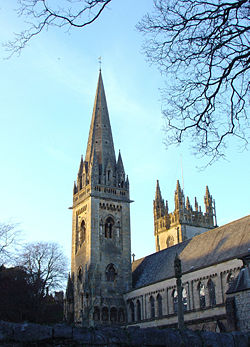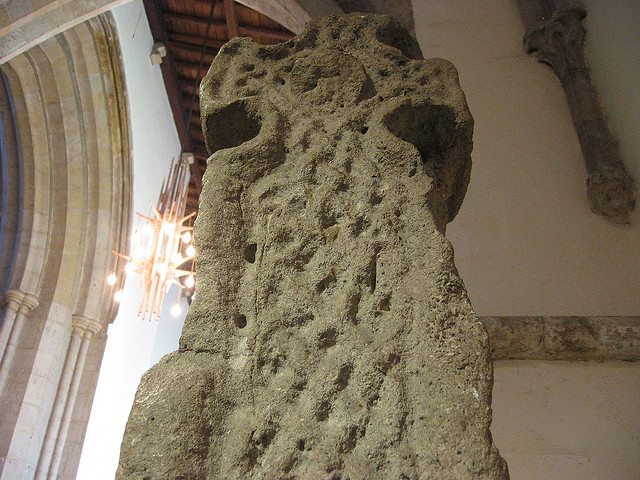
In the sixth century, Saint Dubricius (Welsh: Dyfrig) founded a community near the ford where the Roman road crossed the river Taff. The first church was built on the site of an existing church by the successor of Dubrisius, Saint Teilo. Teilo was a cousin of David, the patron saint of Wales and is buried in the cathedral. The only remnant of the original church is a Celtic cross.

The first Norman bishop appointed to Wales was Bishop Urban. He began the building of a cathedral in 1120. Urban had the remains of Saint Dubrisius transferred from Bardsey and reburied in the Cathedral. Work on this building was not completed until 1290. The arch behind the High Altar survives from that time. The cathedral was extended and widened and a new West front was built about 1220. Later in the 13th C. the Chapter House and Lady Chapel were built. These have survived the damage and decay the cathedral has suffered over the last 700 years. The church suffered damage in 1400 during the rebellion of Owain Glyndwr but most of this was repaired.
Before the end of the 15th C., Jasper Tudor built a new northwest tower to house the bells which had been in a detached tower that had fallen into ruin. Jasper Tudor assumed the lordship of Cardiff after the accession to the throne of his nephew, King Henry VII of England. Up until the time of King Henry VIII, Jasper’s kinsmen supported the cathedral with gifts and pilgrims flocked to the tomb of Saint Teilo. With the Dissolution of the Monasteries under Henry VIII, pilgrims were forbidden and other revenues were lost. The cathedral fell into disrepair and ruin.

During the English Civil War, the cathedral was assaulted by Parliamentarian troops. The southwest tower experienced major damage during the Great Storm of 1703 and by 1720 was in a state of collapse. A new cathedral was designed and construction began but it was never finished. During the 19th C. the Bishop of Llandaff began to reside in Llandaff and started to have the cathedral restored, the tower rebuilt and a spire added. Most of this work was completed between 1843 and 1869.
During the Cardiff Blitz in World War II, on January 2, 1941, the cathedral was severely damaged. The roof was blown off the nave, south aisle and chapter house. The top of the spire also had to be reconstructed and the organ was damaged. Of the British Cathedrals, only Coventry Cathedral was damaged more than Llandaff. Major restoration was begun and finally finished and the cathedral was back in use by 1958. The Queen attended a service commemorating the completion of the restoration work on August 6, 1960.
Beautiful structure, and am so glad it was restored!
LikeLike